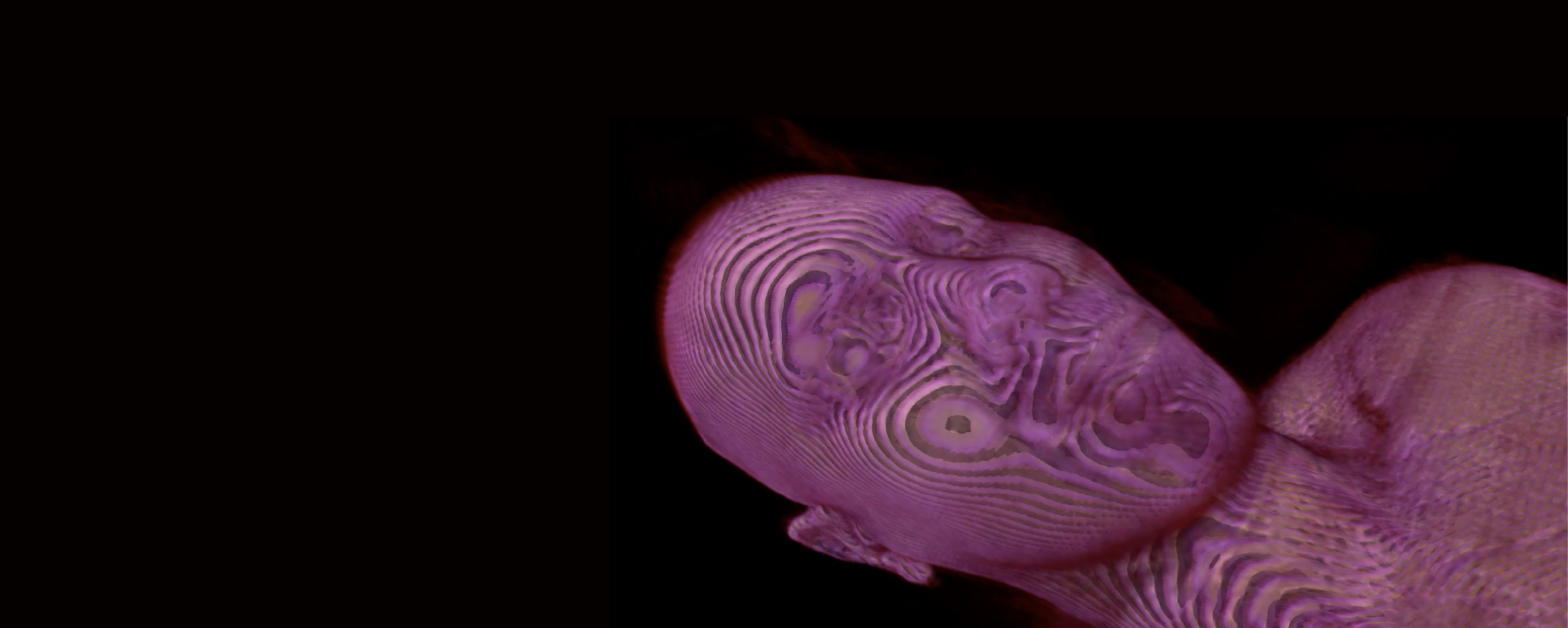5 Questions with Marilène Oliver

What is the future of the human body? If you walked into Enterprise Square this week, you may have confronted this question head on.
What began two years ago as a multi-disciplinary research project eventually morphed into DyscorpiaDyscorpia, the new exhibition occupying Enterprise Square Galleries until mid May. To get a feel for Dyscorpia, you needn't look further than Art & Design professor and exhibition curator Marilène Oliver - her own work has blurred the boundaries between art and science, biology and technology, the real and the virtual for years.
We caught up with Marilène for an inside look at Dyscorpia:
What is Dyscorpia all about?
Dyscorpia sums up that feeling all of us know, but can't quite name: it's the unease between the body and new technologies. You know that funny feeling, when you don't quite know what to do with yourself anymore?
We're having to re-learn our bodies in the face of these technologies.
How do you see the human body changing?
I've been working with visualizations of the body using medical data for the past 20 years. When I first started we had really low resolution data, the images used to be grainy… it was hard to work with.
Now, I have super high resolution, detailed images in virtual reality - you can put your head inside and see everything, in tiny millimeters of detail. Complete transparency of the human body is here. You can go inside it and experience it.
Tell me about one of your own pieces on display.
I've always wanted to work with VR, and one of the pieces I did is called "Deep Connections." I was working with an AI researcher, and we kept asking: what is the future of AI? What do we want it to do for us?
At the same time my mother passed away, and I spent a couple weeks in hospital with her. It made me think: what we don't want is to lose that human interaction, where we stay with each other in our most vulnerable moments.
So the VR piece is a figure that's lying prone, and you can hold the figure's hand. As long as you hold their hand, their heart beats - but when you let go it stops. You can stand there and not expect anything of each other, but just be together.
What is one of the other works in the exhibit that you're really excited about?
One of my personal favorites is the Yves Netzhammer installation. He's a Swiss artist, and we have an installation of his animations that are absolutely stunning. They're projected into wall paintings.
It kind of sums up the whole exhibition: we have these figures rendered using computer technology, but they have these poetic and sad and beautiful relationships to objects and other species.
What should someone attending the exhibit expect?
To be surprised. To see technology pushed to its limits for aesthetic purposes. To think about technology in the body.
You've likely never seen anything like this before.
DyscorpiaDyscorpia runs from April 23 - May 12, 2019 at Enterprise Square Galleries. An opening reception will take place on April 27 from 6 p.m. to 9 p.m.

Marilene Oliver is Assistant Professor of Printmaking and Art & Design. Her work is at the crossroads of new digital technologies, traditional print, and sculpture. It focuses on producing objects that bridge the virtual and the real worlds. She uses medical scanning technologies such as MRI, CT, and PET in works that allow us to materially contemplate our digitized selves. She has exhibited internationally, at the Royal Academy in the UK, the MassMoCA in the US, and the Copernicus Museum in Poland. Her work is also held in a number of private and public collections around the world. She also leads LASERUalberta, a series of Arts-Science public talks.
Read more:
Standing before Marilène Oliver's interactive video installation, you are invited to strap on a virtual reality headset…www.folio.caNew exhibition explores human connection in a virtual world
Standing before Marilène Oliver's interactive video installation, you are invited to strap on a virtual reality headset…www.folio.ca